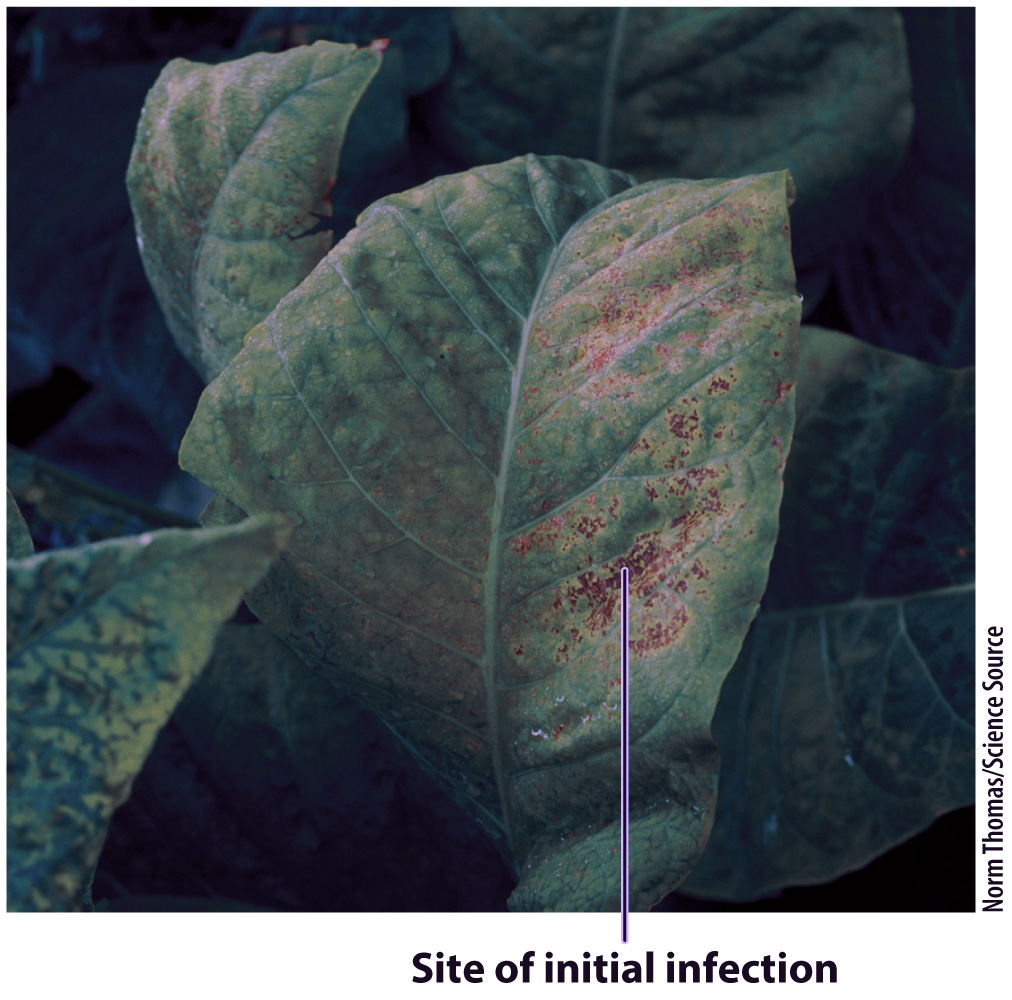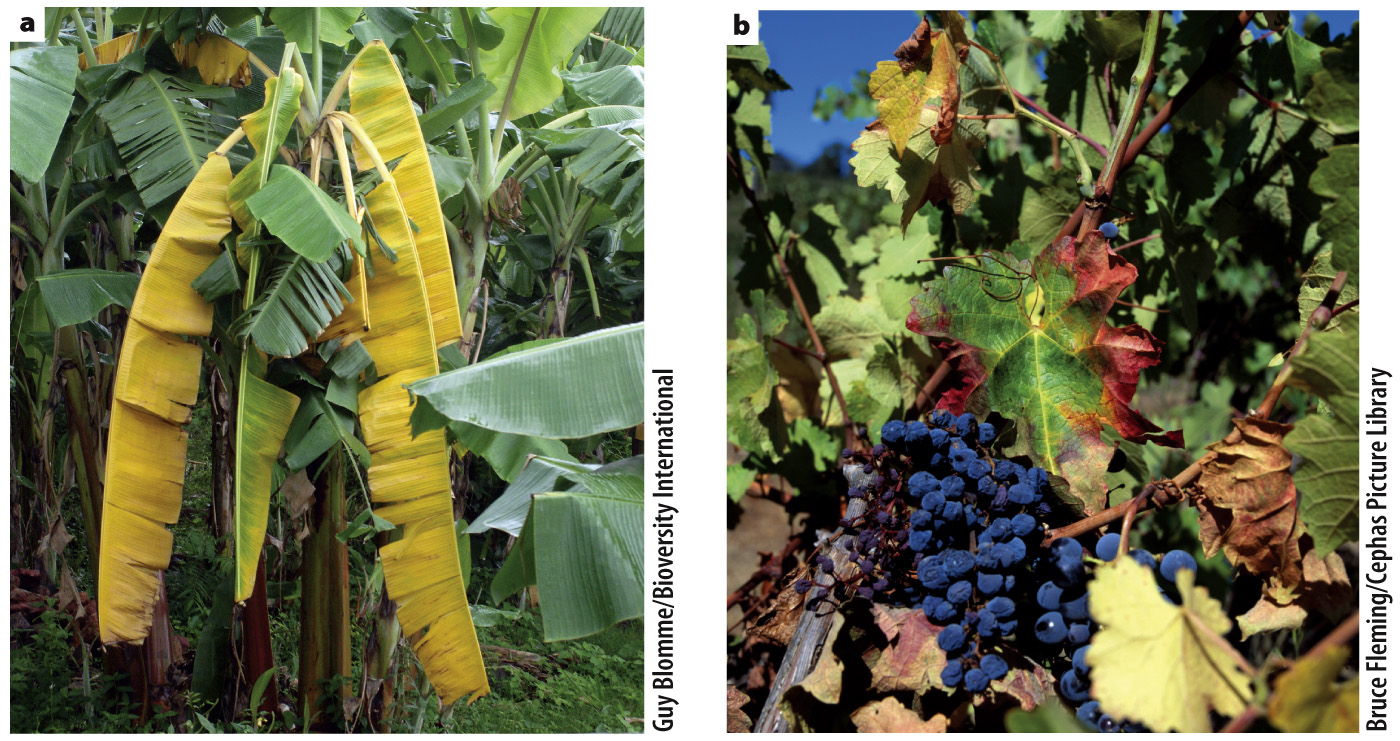Plants respond to infections by isolating infected regions.

FIG. 32.5 Hypersensitive response. A tobacco plant infected with tobacco mosaic virus responds by producing a region of dead tissue that surrounds the site of infection and prevents the virus from spreading to other parts of the plant.
Once a plant has detected a pathogen, how does it protect itself? One way is by reinforcing its natural barriers against pathogens. For example, plants commonly defend themselves by strengthening their cell walls, closing their stomata, and plugging their xylem. Or the plant can counterattack. Plants produce a variety of antimicrobial compounds, including ones that attack bacterial or fungal cell walls. A third type of defense is known as the hypersensitive response. In this case, uninfected cells surrounding the site of infection rapidly produce large numbers of reactive oxygen species, which trigger cell wall reinforcement and cause the cells to die (Fig. 32.5). The death of surrounding cells creates a barrier of dead tissue that prevents the spread of biotrophic pathogens.
Plants can defeat pathogens by isolating infected regions to a far greater degree than is possible in most animals. For example, plants respond to the presence of xylem-transported pathogens by plugging xylem conduits. If the infection is caught in time, the pathogen is prevented from spreading throughout the plant. But if containment fails and the pathogen spreads, the plant may contribute to its own demise by blocking its entire vascular system. Virulent pathogens that move through the xylem cause a variety of disorders collectively referred to as vascular wilt diseases (Fig. 32.6). The widespread death of native elm trees in both Europe and North America is the result of a vascular wilt disease caused by a fungus introduced from Asia but first identified in the Netherlands and therefore referred to as Dutch elm disease.

FIG. 32.6 Vascular wilt diseases. Pathogens that are transmitted through the xylem can kill their host if plant defenses also block water transport to the leaves. (a) Panama disease, which affects bananas, is caused by a fungal pathogen. (b) Pierce’s disease, which affects grapes, is caused by a pathogenic bacterium.

